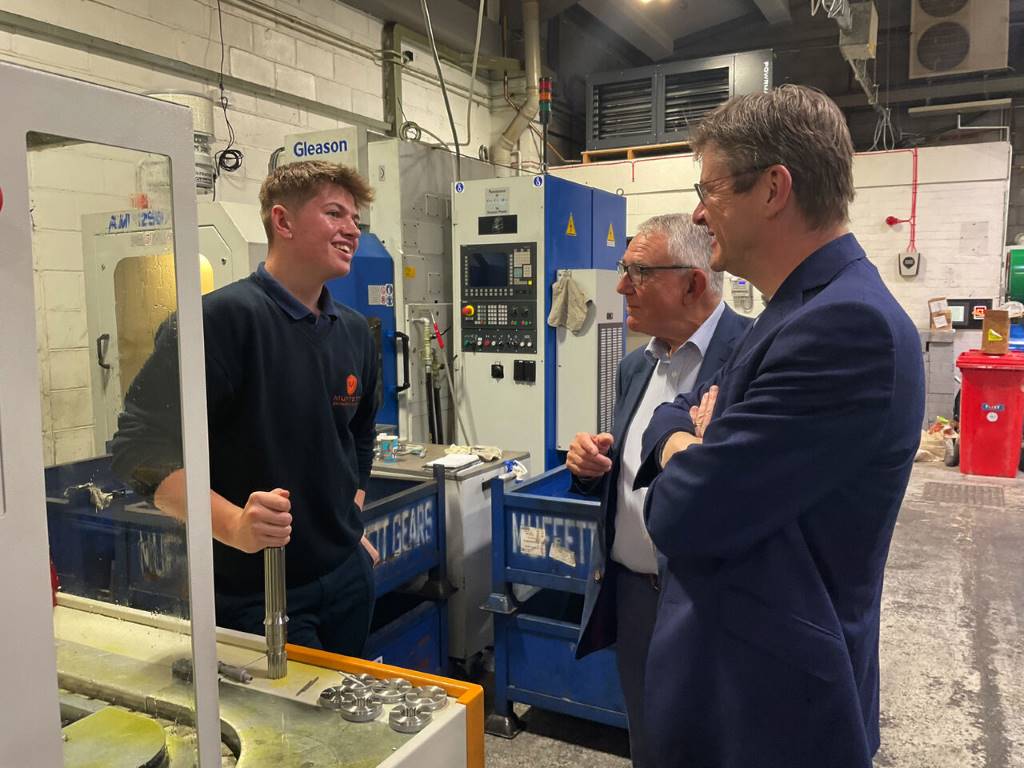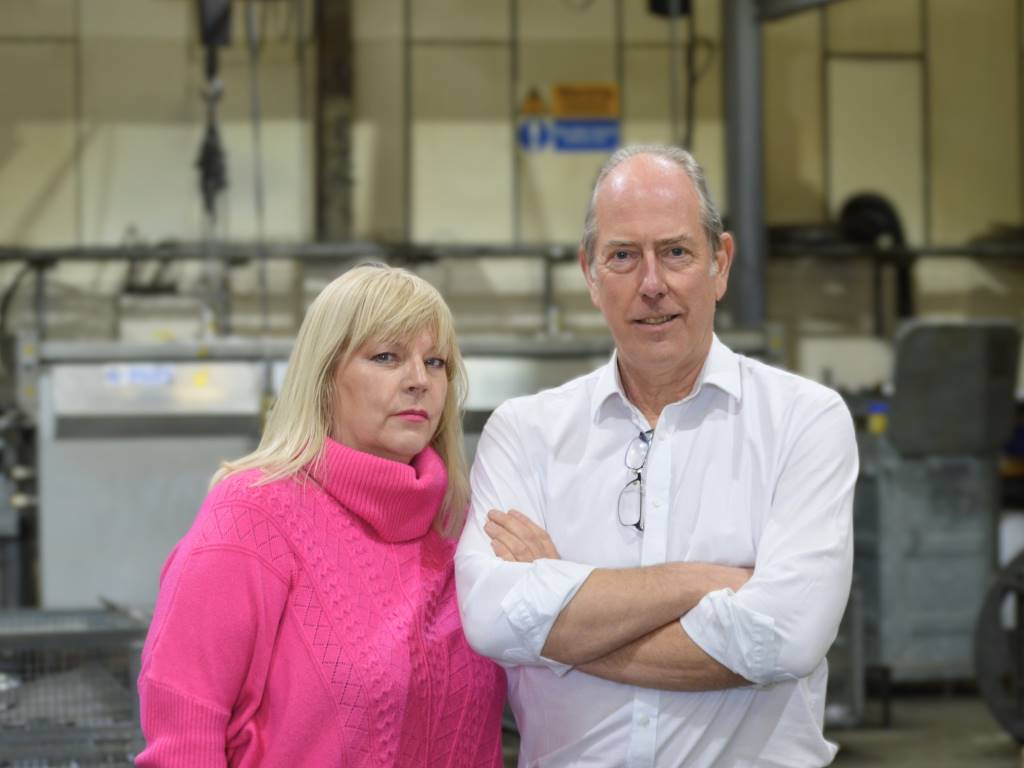Sheetmetal processing: the big picture

We’ve seen seismic advances in sheetmetal processing technology in recent years with much of the focus being on laser cutting. However it’s important not to overlook the other tried and trusted technologies available as Dave Tudor discovered when he spoke to Craig Walsh, sales director at Kerf Developments based in Rochdale.
Don’t get me wrong. Lasers, as they evolved from CO2 to fibre have revolutionised the sheetmetal cutting industry. They’re blisteringly fast, can cut a wide range of materials and produce highly intricate parts and profiles accurately, precisely and consistently – however they’re not for everyone.
For example, there are limitations on the thickness of material that can be cut; the upfront costs can be high; the hazardous fumes produced are a concern, and often a degree of technical expertise is a prerequisite for their operation. While the pros definitely far outweigh the cons with laser, processes like oxy-fuel, plasma and waterjet are 100% proven and remain justifiably popular for specific applications.
Fabricators who do use these processes for their bread and butter should definitely include Kerf Developments on their shortlist of equipment suppliers. With managing director Dan Taylor at the helm, this is an independent British manufacturing company that’s celebrating two decades in business this year.
Kerf started life solely as a repairer of machines, a service that remains in demand two decades later but as is often the case in business, things evolve and within two years of starting the company, driven predominantly by customer demand, Kerf found itself building its own machines.
When you buy a Kerf machine today, new or factory refurbished you’re getting something that is built, tested and fully guaranteed in Rochdale.
The actual extent of assembly work carried out varies depending on the machine. For example, on plasmas, just about everything is built from scratch. Conversely, Kerf’s waterjet range of machines are supplied practically finished from trusted partner SEMYX based in the US. In Rochdale, all that’s needed is to fit the control system and pump.

In control
Operating from its 18,000ft² showroom/workshop, the company employs around 16 people, Several are based in the workshop whilst others are field-based. For example Ireland is a particularly buoyant market for Kerf and it has engineers permanently based there.
“Being independent and privately owned definitely has its benefits,” explains Kerf Developments’ sales director Craig Walsh. “It means we have the freedom to source machine components – such as control systems, frames, tables and plasma units – from any supplier we choose anywhere in the world. Ultimately, this ensures the quality of our assembled machines is 100% under our control.”
Currently, in the showroom, there are three machines fired up and ready to go: a conventional plasma; an Ultrasharp plasma; and a waterjet machine. The facility is also home to over £1m worth of spare parts and consumables to keep customer machines running.
It’s probably an opportune time to discuss the various cutting technologies offered by Kerf Developments. With its oxy-fuel and plasma ranges, it’s important to note that combination machines are available.
Oxy-Fuel
Using a fuel gas and oxygen, oxy-fuel cutting technology has been around for eons but is still very widely used because of its inherent accuracy, robustness, low operating costs, speed and ability to cut through very thick plate.
The process uses a small torch allowing for more intricate cuts and the ability to access smaller areas. It’s often used to prepare edges for groove and bevel welding and contour cutting. The main limitation with oxy-fuel is that it can’t be used to cut stainless, aluminium and other materials that don’t oxidise.
Plasma
Adopting a process that involves passing an electrical arc through a gas (often compressed air) to form a plasma arc, plasma cutting can be used on any conductive material like steel, stainless steel, aluminium, brass, and copper. The combination of gases, high speeds and a concentrated region of pressure produces an electrically conductive ionised gas commonly known as plasma.
As well as traditional plasma cutting, Kerf also offers High Definition plasma machines which can achieve cut speeds of 3,300mm/minute on 12mm thick mild steel. These are well suited for the piercing and cutting of a wide range of materials from 1mm through to 50mm thick.
Ultrasharp
Ultrasharp is a constantly evolving process which accelerates plasma cutting to the next level. Craig Walsh explains: “Ultrasharp takes HD plasma technology and makes it more intelligent by enabling effective, direct communication between the Burny controller and the plasma unit,” he says.
“In practical terms, this means that gas flow and pressure parameters can be changed automatically on the fly by the CAM program, using proven material databases, without any intervention from the operator ensuring top quality products every time. As well as gas flow and pressures, it calculates optimum speeds and feeds and lead-in/lead-out strategies for a part or nest of parts.
“Ultrasharp effectively bridges the gap between plasma and laser quality,” Mr Walsh adds. “In fact, some of the parts that come off our plasma machines with Ultrasharp are as good, if not better, than the equivalent components manufactured on a laser.”
Collectively over the past five years, plasma and Ultrasharp technology has represented around 70% of new machine sales for Kerf.
Lincoln Electric and Burny
Kerf Developments enjoys a longstanding and close relationship with US company Lincoln Electric – reported to be one of the largest suppliers of cutting and welding equipment in the world.
For Kerf, the arrangement works well: now, rather than having to deal with multiple supply channels, Lincoln Electric provides Kerf with the Burny control and drive systems, along with the plasma systems and associated ancillary equipment.
Advanced Piercing Technology
A major new plasma cutting technological development for Kerf is Advanced Piercing Technology. Pioneered by Lincoln Electric, this is a process that Craig Walsh cites as “game-changing” by improving the piercing of thicker plate material, minimising pierce errors caused by top surface dross and in the process increasing consumable life.
During piercing, molten dross material and spatter accumulates on the surface and is difficult to control. Consequently, with conventional HD plasma systems, secondary pre-processing to remove the molten material near the hole is usually required before cutting.
But now, Lincoln Electric has designed a process that it says will revolutionise industrial high-definition plasma cutting productivity by helping to reduce secondary processing significantly if not altogether.
Its new FineLine Advanced Process Controller combined with Advanced Piercing Technology essentially, via a secondary clearing gas, steers the molten metal dross down the pierced hole during the process without adhering to its walls.
By definition, Advanced Piercing Technology promotes repeatable cutting with no collisions, a tighter bevel angle, smooth surfaces, and consumable longevity. It can reduce pierce time by up to 35% while helping to improve productivity and extending consumable life.
Waterjet growth
An upwardly growing market for Kerf is waterjet cutting. Historically, the company is best known for its oxy-fuel cutting and plasma expertise but with the recent appointment of a new waterjet sales manager Paul Eastburn driving sales, waterjet cutting has evolved into a highly successful extension of Kerf’s business.
“Waterjet cutting is the sheetmetal equivalent of a Swiss Army Knife,” Mr Walsh explains, “and for some applications unsuitable for oxy-fuel or plasma, it’s the only viable option. Its greatest strength is its inherent versatility – it can handle a vast range of materials from aluminium, titanium and brass, through to copper, foam, rubber, ceramics, marble and granite – and of course there’s no heat involved (and consequently no heat affected zones), no hazardous waste, and the process is highly accurate.
“Our Optima range of waterjet machines offer a variety of table sizes in 3-, 4-, and 5-axis configurations. It’s still an amazing sight for me to see a of jet of high pressure water blasting out of a cutting head at 60,000 psi cutting through granite like a knife through butter with extreme accuracy and precision,” he concludes.













